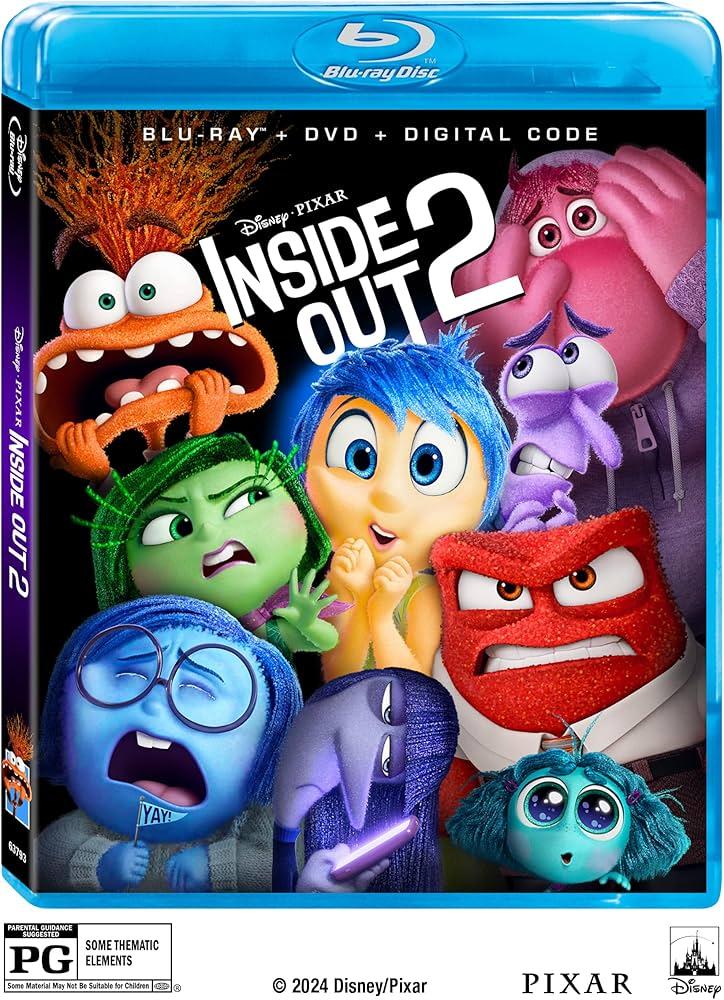In the realm of animated storytelling, Pixar has long been celebrated for its ability to weave complex narratives that resonate with audiences of all ages. Among its impressive repertoire, “Inside Out” stands out as a masterful exploration of the intricate world of human emotions. Released in 2015, this film takes viewers on a journey inside the mind of an eleven-year-old girl, Riley, as she navigates the challenges of growing up. At its core, “Inside Out” is not just a tale of childhood and change; it is a sophisticated examination of how emotions shape our experiences and identities. Through innovative storytelling and a deep understanding of psychological concepts, Pixar brilliantly encapsulates the chaotic, yet essential, role emotions play in our lives. This article delves into the nuanced techniques employed by Pixar to portray emotions with authenticity and depth, highlighting how “Inside Out” serves as both an artistic triumph and a valuable educational tool.
Exploring the Emotional Spectrum: Pixars Innovative Approach
Pixar’s Inside Out stands as a testament to the studio’s ability to transform complex psychological concepts into accessible, engaging narratives. By personifying emotions as distinct characters, Pixar innovatively explores the intricate workings of the human mind. Joy, Sadness, Fear, Anger, and Disgust are not merely abstract feelings but active participants in the protagonist Riley’s journey. This approach allows the audience to understand the dynamic interplay of emotions and their impact on behavior and decision-making.
- Character Development: Each emotion is meticulously crafted to reflect its unique role in Riley’s psyche. For example, Joy’s vibrant energy contrasts with Sadness’s calm demeanor, illustrating the necessity of emotional balance.
- Narrative Structure: The film’s storyline cleverly parallels the emotional upheavals experienced during Riley’s transition to a new city, providing a relatable backdrop for viewers of all ages.
- Visual Metaphors: The use of vivid colors and imaginative landscapes within Riley’s mind further emphasizes the emotional spectrum, making abstract concepts tangible and memorable.
By weaving these elements together, Pixar not only entertains but educates, offering a profound commentary on the essential role emotions play in shaping our experiences and identities.
Character Development and Emotional Depth: A Deep Dive into Inside Out
Pixar’s Inside Out is a masterclass in character development and emotional depth, transforming abstract concepts into relatable narratives. At its core, the film explores the complexity of human emotions through the personification of Joy, Sadness, Anger, Fear, and Disgust. Each character is meticulously crafted, representing the multifaceted nature of our emotional experiences. The brilliance lies in how these characters are not mere caricatures; instead, they evolve alongside Riley, the protagonist, reflecting the intricacies of her internal world.
The emotional depth is further enriched by the film’s nuanced storytelling techniques. Key elements include:
- Interconnectedness: The film illustrates how emotions are not isolated but interact in ways that shape our personalities and memories.
- Growth through Conflict: Characters face challenges that force them to adapt and grow, mirroring real-life emotional development.
- Empathy and Understanding: By delving into each emotion’s role, the film fosters a deeper understanding of their importance in our lives.
This insightful portrayal not only captivates audiences but also encourages them to embrace the full spectrum of their emotions, recognizing their value in personal growth and self-awareness.

Cinematic Techniques that Bring Emotions to Life
Pixar’s “Inside Out” is a masterclass in using cinematic techniques to evoke deep emotional responses from its audience. One of the key strategies employed is the use of color symbolism. Each emotion is personified by a character with a distinct color palette: Joy is bright yellow, Sadness is blue, Anger is red, Disgust is green, and Fear is purple. This vivid use of color not only helps in visually distinguishing the emotions but also taps into universal color associations, making it easier for viewers to connect with the characters on a subconscious level.
Moreover, Pixar excels in utilizing camera angles and movements to enhance the emotional journey. For example, when Riley feels overwhelmed, the camera often adopts a close-up shot, intensifying the sense of confinement and pressure. In contrast, moments of clarity and joy are accompanied by wide-angle shots, which convey a sense of freedom and expansiveness. These techniques, combined with expressive animation and nuanced voice acting, create a rich tapestry of emotions that resonate powerfully with audiences of all ages.
- Color Symbolism: Each emotion represented by distinct colors.
- Camera Dynamics: Use of angles to convey emotional states.
- Expressive Animation: Detailed character expressions and movements.
- Nuanced Voice Acting: Bringing depth to emotional portrayal.

Lessons in Emotional Intelligence: Recommendations from Inside Out
Pixar’s Inside Out masterfully delves into the complexities of emotional intelligence, offering viewers a profound understanding of how emotions interact and influence behavior. This animated journey provides several insightful lessons that are both entertaining and educational. The film illustrates the dynamic interplay between Joy, Sadness, Anger, Fear, and Disgust, showcasing how each emotion has a vital role in maintaining emotional balance and mental well-being.
- Embrace All Emotions: One of the key takeaways is the importance of acknowledging and embracing all emotions, not just the positive ones. By allowing Sadness to have its place, the film highlights how it can lead to genuine empathy and deeper connections.
- Emotional Diversity: Each emotion provides a unique perspective and set of skills. Joy brings optimism, Sadness offers reflection, Fear ensures caution, Anger fuels justice, and Disgust maintains standards. Recognizing this diversity is crucial for personal growth and effective decision-making.
- Memory and Emotion Interconnection: The film emphasizes how memories are colored by emotions, shaping our perception and influencing future actions. Understanding this connection can help in reframing past experiences and fostering resilience.
By illustrating these concepts through vibrant storytelling and relatable characters, Inside Out becomes a powerful tool for enhancing emotional intelligence in both children and adults.









